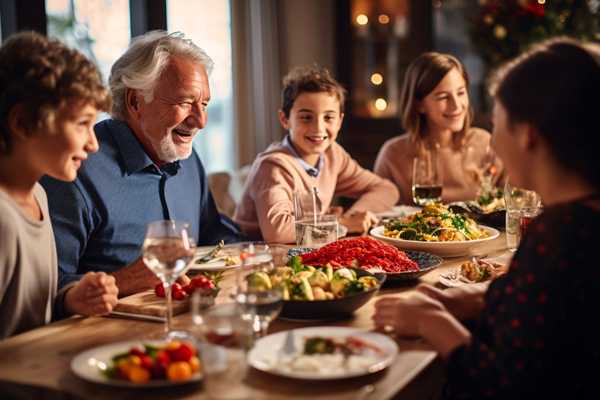

EXERCISE & FITNESS ARTICLES

Combat the Epic of Loneliness by Eating Together
Americans face a lack of social connection that poses a significant risk to individual health and longevity. According to a recent report by the U.S. Surgeon General, “Loneliness and social isolation increase the risk for premature death by 26 to 29 percent. More broadly, lacking social connection can increase the risk for premature death as much as smoking up to fifteen cigarettes a day.”
One way to address this epidemic of loneliness is by sharing a meal with friends and family. Listed below are five of the specific advantages of family meals identified by the Family Meals Movement. Take advantage of these benefits during National Family Meals Month this September by sharing one more meal with your family each week.

Meals Together Foster Togetherness and Connectedness
Staying connected can be hard when schedules conflict and life gets busy, but shared meals with friends and family can be the glue that holds people together. Studies demonstrate a positive relationship between family meal frequency and measures of family functioning, which is defined as family connectedness, communication, expressiveness. and problem-solving. The key is for family members to engage in conversation with one another during mealtimes and take advantage of the one-on-one time without distractions or interruptions from smartphones or other devices.
Meals Together Strengthen Mental Health
An often overlooked benefit of family meals is mental health support. Multiple studies show family meals have long been associated with improving mental health, including reducing symptoms of depression, decreasing violent behavior, and lessening thoughts of suicide among youth. Among adolescents, frequent family meals can help mitigate the risks of destructive behaviors by boosting prosocial behaviors and life satisfaction. Data from the FMI Foundation’s Staying Strong with Family Meals Barometer shows family meals also help restore a sense of peace, with one-third of survey respondents saying family meals make them feel calm. In short, family meals are a recipe for strengthening emotional well-being among children and adolescents.
Meals Together Improve Nutrition
There is one easy way to help ensure your family is eating fruits and vegetables: a family meal. Research shows family meals improve fruit and vegetable consumption. It also pays to start this trend early, with research finding preschool-aged children who eat frequent family meals are more likely to eat more fruits and vegetables. Overall, research indicates families who eat together frequently have a better overall healthy diet and lower body mass index.
Meals Together Improve Academic Performance
Helping students’ academic performance begins around the family dinner table. Multiple studies show students whose families eat together frequently perform better academically in areas such as reading and vocabulary. Research also supports a correlation between frequent family meals and lower incidents of risky and harmful behaviors, including drug and alcohol abuse, which may also contribute to school performance.
Meals Together Teach Civility
The family dinner table is a perfect place to show younger generations how to communicate respectfully, according to the Family Meals Barometer summary. In fact, 76 percent of survey participants agreed family meals are a good opportunity to have and teach respectful interactions, while 70 percent said frequent family meals create a safe environment for families to discuss thornier societal issues. Another 68 percent affirmed their belief that sitting at a meal together tends to keep conversations more civil.
Learn more about the physical, mental, and social benefits of family meals at familymealsmovement.org and follow #familymealsmonth and #familymealsmovement on social media.
